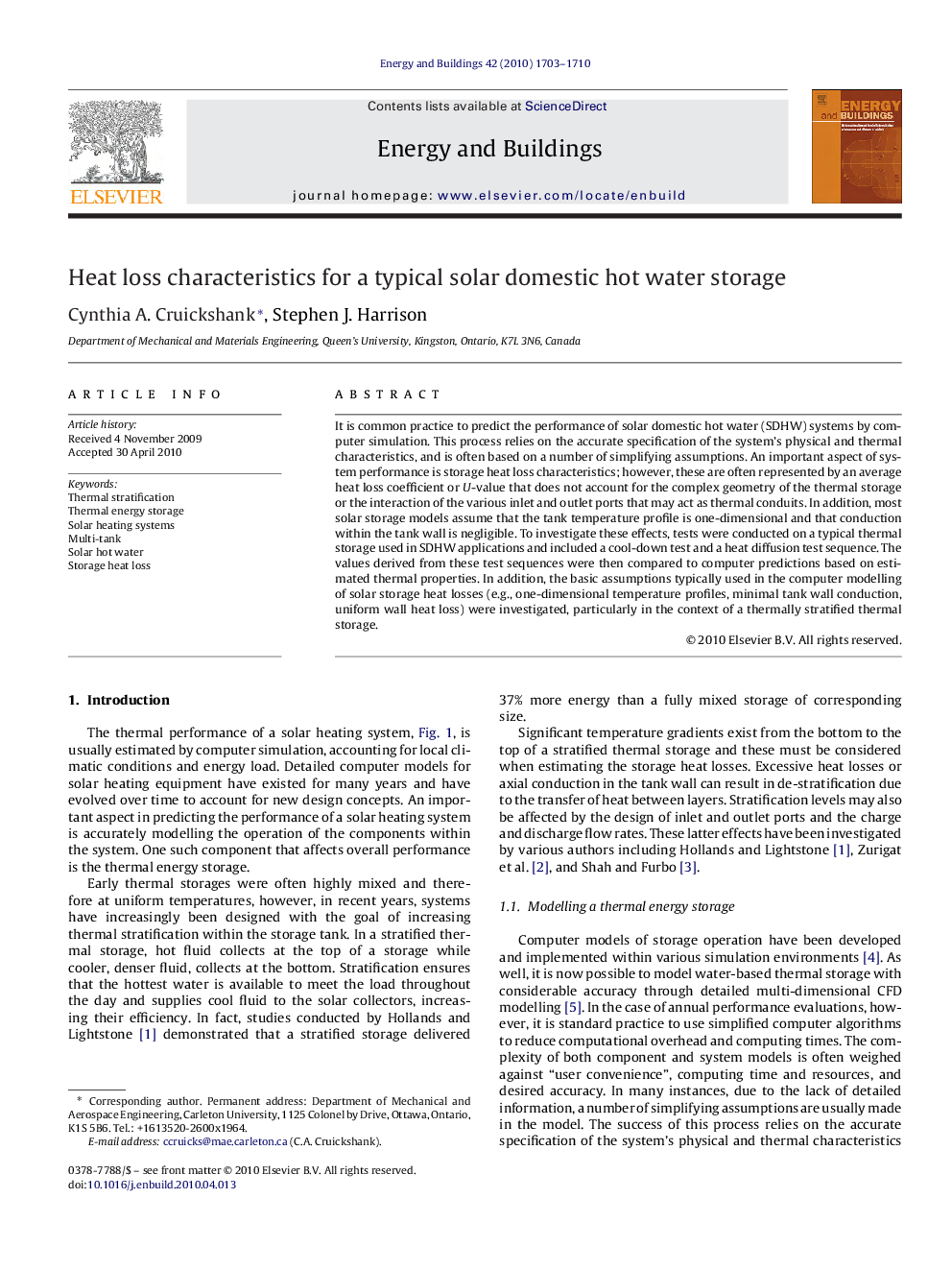| Article ID | Journal | Published Year | Pages | File Type |
|---|---|---|---|---|
| 264594 | Energy and Buildings | 2010 | 8 Pages |
It is common practice to predict the performance of solar domestic hot water (SDHW) systems by computer simulation. This process relies on the accurate specification of the system's physical and thermal characteristics, and is often based on a number of simplifying assumptions. An important aspect of system performance is storage heat loss characteristics; however, these are often represented by an average heat loss coefficient or U-value that does not account for the complex geometry of the thermal storage or the interaction of the various inlet and outlet ports that may act as thermal conduits. In addition, most solar storage models assume that the tank temperature profile is one-dimensional and that conduction within the tank wall is negligible. To investigate these effects, tests were conducted on a typical thermal storage used in SDHW applications and included a cool-down test and a heat diffusion test sequence. The values derived from these test sequences were then compared to computer predictions based on estimated thermal properties. In addition, the basic assumptions typically used in the computer modelling of solar storage heat losses (e.g., one-dimensional temperature profiles, minimal tank wall conduction, uniform wall heat loss) were investigated, particularly in the context of a thermally stratified thermal storage.
